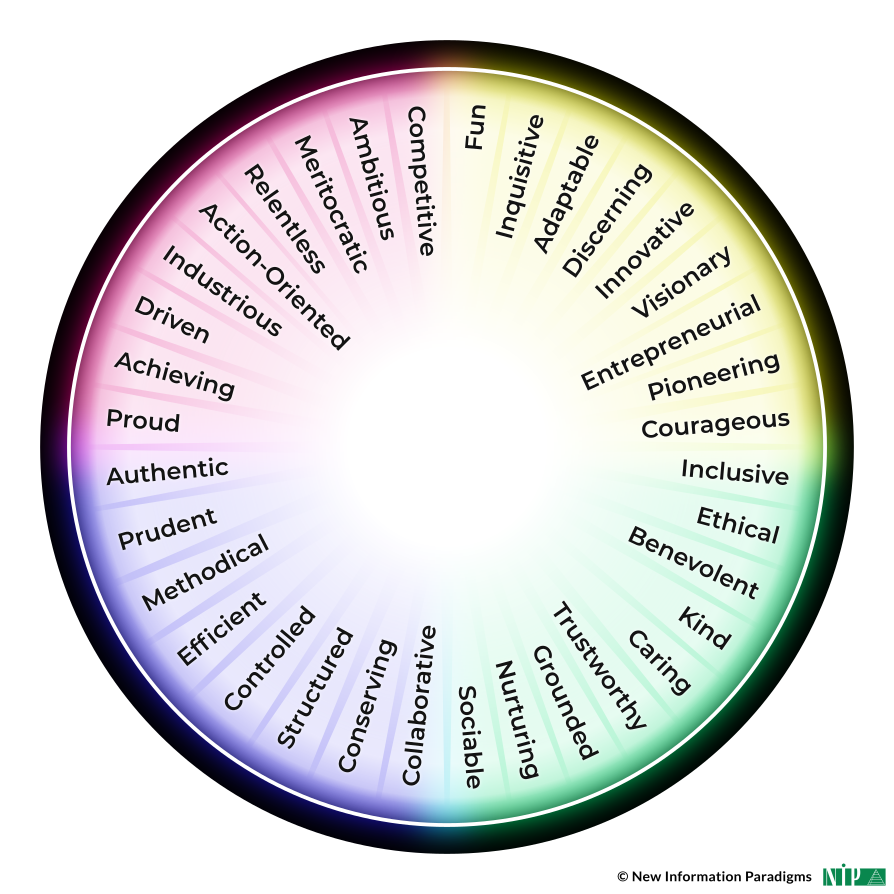“Value Vectors”: What They Are and Why They Matter

We have developed a “Value Vectors Diagnostic“, but what is a “value vector”? Where do they come from? And how can they be understood and used?
Value Vectors are attitudes and behaviours – values in action – that describe aspects of an individual’s character or, collectively, aspects of a team or organisation’s culture.
From analyzing, refining and adding to schemas of personal and cultural values (particularly Shalom H Schwartz’s Theory of Basic Human Values, but numerous other academic and consultancy sources), we have identified a total of 35 such Value Vectors.
This is number that is manageable for evaluation and understanding, but which still allows for rich analysis and differentiation – including more nuance than is available in other schemas (and we also group the 35 Value Vectors into 16 sub-categories to assist with this analysis).
The Value Vectors are organized in a wheel that contains 4 quadrants, where opposite and adjacent Value Vectors – and groups of Value Vectors – can be visualized and understood, including the dynamics between them:

What we each value is based on our particular “configuration” of Value Vectors on this wheel.
You’ll spot that related Value Vectors are adjacent to each other, whilst opposites are typically in tension with each other – or even mutually exclusive.
All are equally valid, but it’s easy to see how conflict emerges when people and organizations pull in different directions.
Value Vectors therefore need to be appropriately balanced within each organization to best serve its customers and goals, and that balance will often need to change as conditions change.
For example, the Value Vectors to prioritize in a start-up or R&D phase will be very different from those when offering a stable market proposition.
Clarity about an organization’s ‘Value Vector profile’ will also greatly help foster the desired culture, attract and retain the right employees, and act consistently.
(After all, how often do we see organizations claim to embody a set of Value Vectors in one quadrant of the wheel whilst actually demonstrating those in the opposite quadrant?)
And that’s why we developed the Value Vectors diagnostic.

